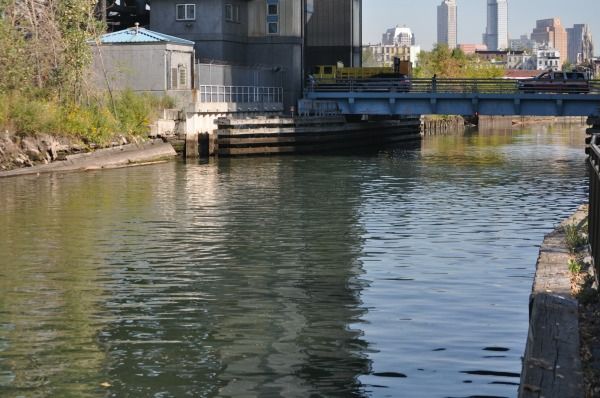EPA Announces $506 Million Gowanus Cleanup Plan


From the banks of the Gowanus Canal Monday, the Environmental Protection Agency announced its $506 million plan to clean up the Superfund site, one of the most polluted waterways in our country.
“What this cleanup plan will do is require the removal of 600,000 cubic yards of contaminated sediment from the bottom of the canal,” explained Judith Enck, EPA Regional Administrator. “This plan today also reduces sewage overflows by 58 percent to 74 percent, so that the canal stays clean after the dredging.
“When it rains,” Enck said, “the combined sewer system often overflows, sending a wave of raw sewage and toxic material into the canal. This overflow produces a new layer of toxic material in the canal.
“This cleanup plan that the EPA is announcing today will require that discharge from two of the main sewage overflow points at the upper canal be outfitted with retention tanks,” she continued, “so that when it rains heavily, the tanks will hold the water and we don’t have this rush of raw sewage and toxins going into the canal.”

The cleanup, expected to take between 8 and 10 years to complete, will be funded by “potentially responsible parties,” which include National Grid, the City of New York, 4 federal agencies, and 29 companies.
“More than 100 years of industrialization has put its toxic stamp on the Gowanus Canal,” said Enck. “Now we have a chance to put our stamp on the canal. Our parents, many who grew up in Brooklyn, have only known a polluted Gowanus Canal. Our children and our grandchildren will now only know a clean one. Today is the day that the legacy of the Gowanus Canal has changed course.”
Council Member Brad Lander went a step beyond the banks of the canal, and encouraged community leaders to also focus on the neighborhood surrounding the Gowanus.
“Building on the Superfund plan, we must move forward with developing a comprehensive plan for the blocks around the Gowanus Canal,” he said in a statement. “Following Superstorm Sandy, when the canal flooded surrounding homes and businesses, it is clear that we cannot approach the future of this neighborhood site by site. Let’s work together to create a model for comprehensive planning in low-laying areas — one that prepares us for climate change and works for our community.”



